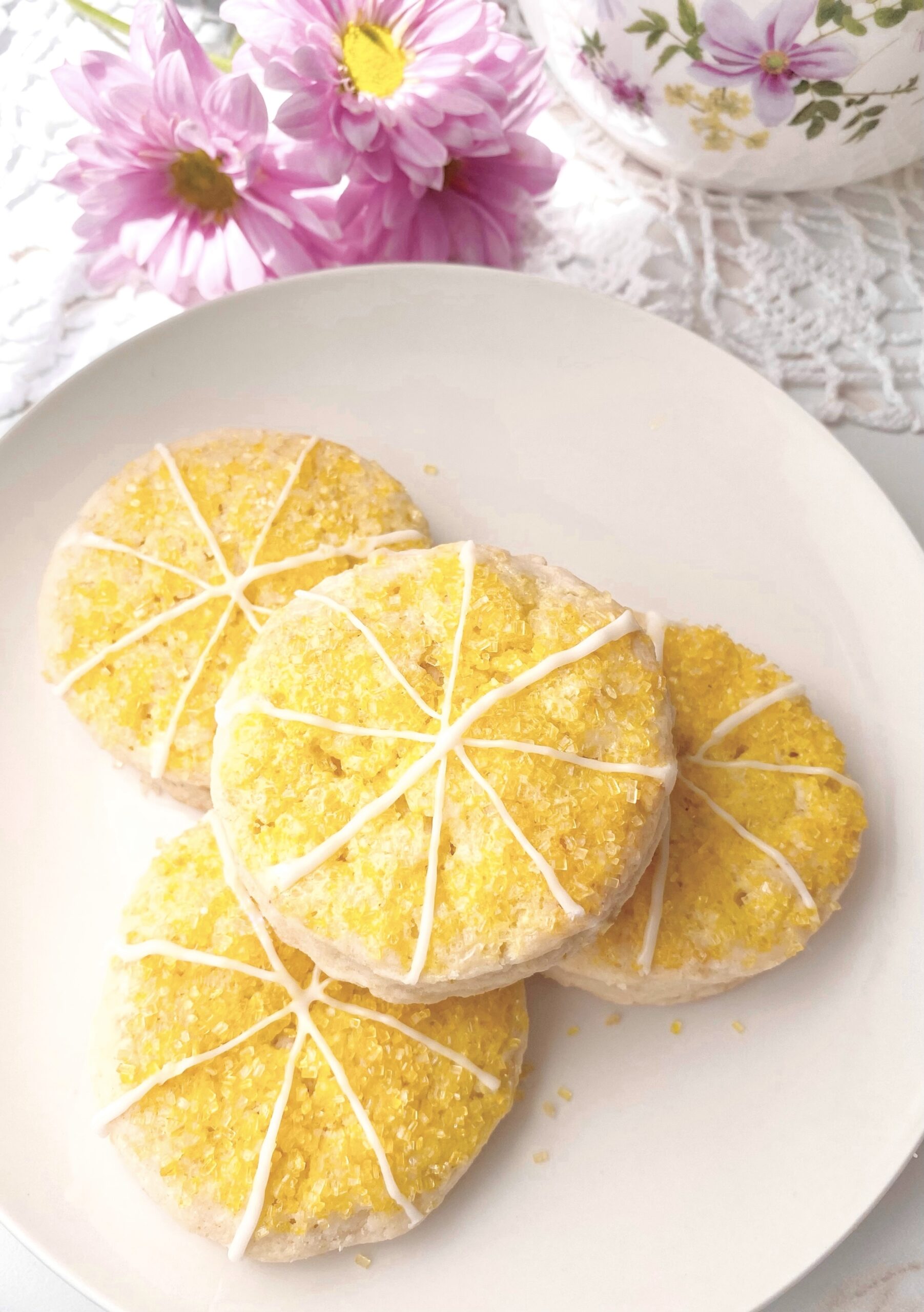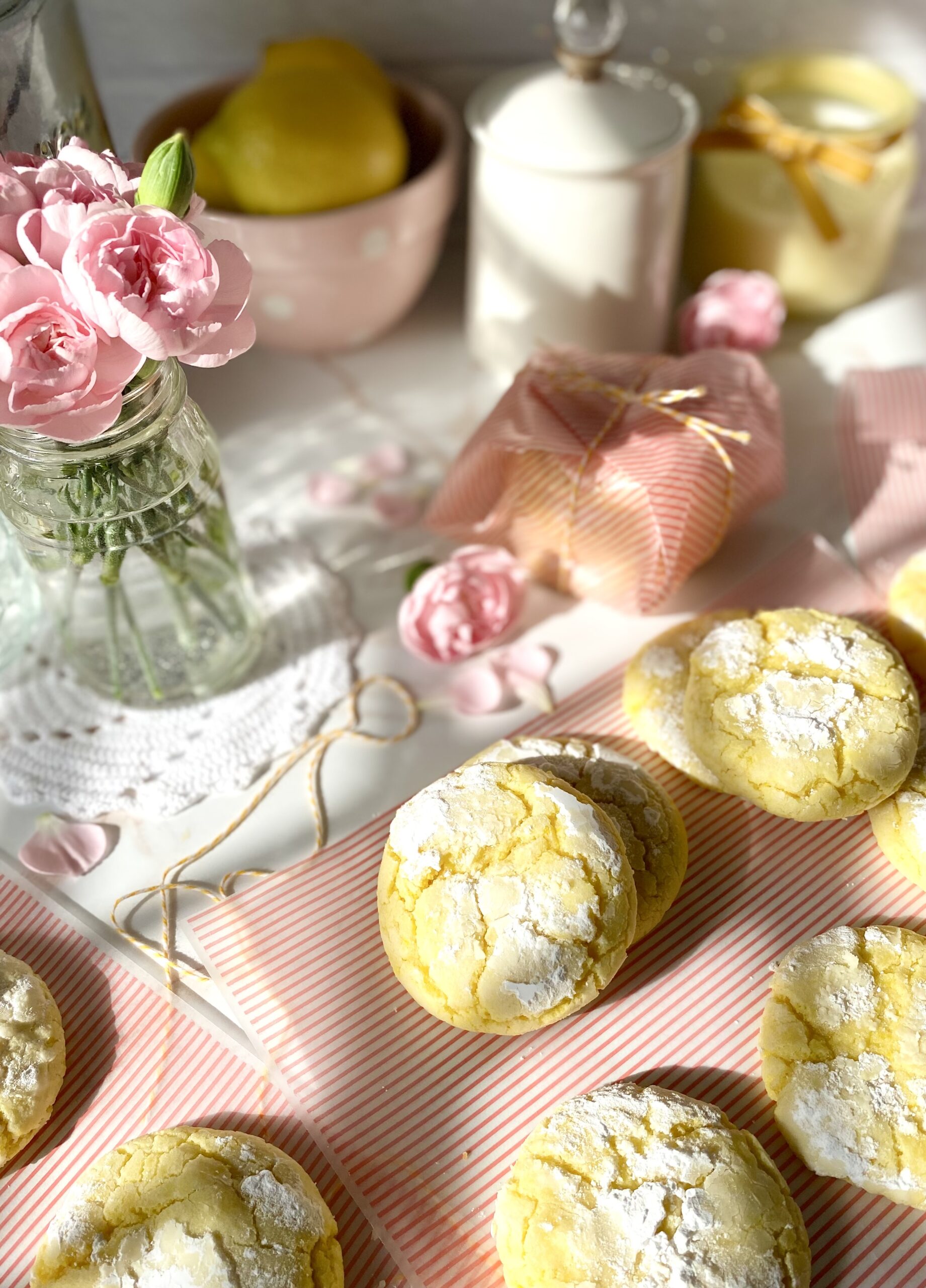
Yellow is the color of happiness and sunshine. These adorable Lemon Scones will bring you a burst of lemony brightness even on the grayest day. The pretty, vibrant yellow sparkling sugar adds a pleasant crunch to the tops. It’s a nice contrast to the soft, tender interior of the scones. These little gems would shine on any breakfast or brunch table. I served them with blueberry jam and green tea, which was so delightful, I’m still smiling.
| Servings |
scones
|
- 1 3/4 cups (7 7/8 oz or 223g) all purpose flour, sifted
- 1 tablespoon baking powder
- 1/2 teaspoon fine sea salt
- 1/4 cup (1 3/4 oz or 50g) sugar
- 7 tablespoons (3 1/2 oz or 99g) cold, unsalted butter, cubed
- 1 tablespooon lemon zest
- 2/3 cup 5 1/4 oz or 156ml) cold heavy cream plus more for tops
- 2 tablespoons lemon juice
- yellow sparkling sugar*
- 1/3 cup (1 1/2 oz or 46g) powdered sugar, sifted
- 1 teaspoon heavy cream
- 1-2 teaspoons lemon juice
Ingredients
Lemon Scones
Icing
|
|
- Preheat the oven to 375ºF (190ºC). Line a baking sheet with parchment paper.
- In a large bowl, whisk together the flour, baking powder, salt and sugar.
- Work the butter and lemon zest into the flour mixture with your fingers or with a pastry blender until pea size chunks form.
- Stir in the heavy cream and lemon juice until a shaggy dough is formed. If your dough seems too dry, you can add 1-2 more teaspoons of heavy cream.
- Turn the dough out onto a lightly floured surface. Knead briefly, by folding dough over onto itself a few times. Do not overwork the dough.
- Pat or roll the dough into an 8-inch round, about 3/4-inch thick. Cut out rounds using a 2" or 2 1/4" inch round cutter.**
- Place scones about 2 inches apart on prepared baking sheet. Brush scones with heavy cream. Sprinkle generously with sparkling sugar.
- Bake until edges are golden brown, about 16-19 minutes.
- Cool completely on a wire rack. Decorate with icing.
- In a small bowl, whisk together the powdered sugar, heavy cream and enough lemon juice to form a stiff icing.
- Transfer icing to a piping bag or a plastic zip bag. Snip off the tip of the bag. Pipe lines in a spoke pattern onto the scones.
*To find the sparkling sugar I used, click here.
**To find the cutter I used, click here.





